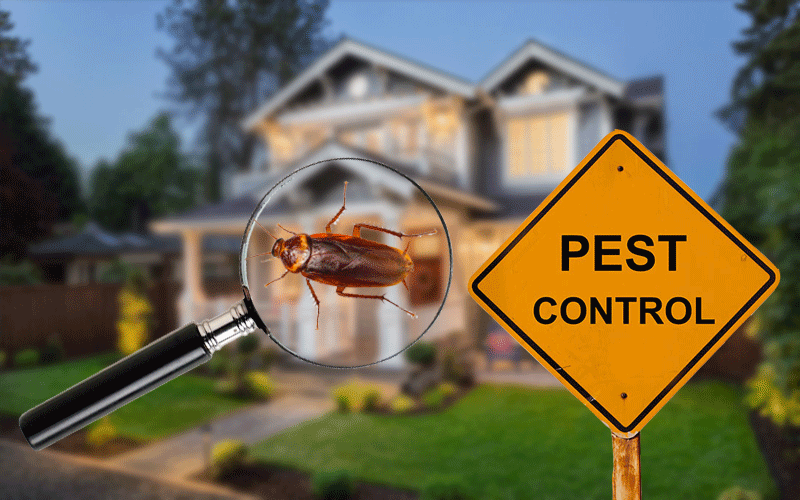Experienced A1 Exterminators Charlotte NC - Quick and Reputable Solutions
Experienced A1 Exterminators Charlotte NC - Quick and Reputable Solutions
Blog Article
Bed Insect Therapy Break Down: Comparing Chemical Vs. Non-Chemical Solutions
In the world of bug control, especially when handling the relentless problem of bed bugs, the selection between chemical and non-chemical treatment solutions can be an essential one. Both techniques provide distinctive benefits and downsides, influencing factors such as effectiveness, safety factors to consider, and general expense. By examining the nuanced details of each approach, a more clear understanding of which course to pursue in addressing a bed pest problem can be acquired.
Performance of Chemical Therapies
Chemical treatments for bed bug infestations have actually been widely acknowledged for their rapid and potent efficacy in eliminating these insects. When considering the performance of chemical therapies, it is crucial to understand that they can supply a thorough and fast solution to a bed bug issue.
Additionally, chemical treatments have the benefit of using residual impacts, suggesting that they can remain to eliminate bed pests also after the preliminary application. This recurring activity is especially advantageous in combating any prospective re-infestations. Furthermore, the quick activity of chemical therapies can bring alleviation to individuals encountering severe bed bug infestations, enabling them to regain control of their space rapidly.
Security Worry About Chemical Solutions
When using chemical services for bed insect therapy is making sure the safety of owners and the setting,One critical aspect that calls for cautious consideration. While chemical treatments can be reliable in eradicating bed insects, they may present threats if not managed correctly. One of the key safety interest in chemical options is the possible harm they can cause to human wellness. Exposure to certain chemicals made use of in bed bug treatments can lead to breathing problems, skin inflammation, or other negative responses, specifically in individuals with pre-existing conditions or sensitivities. Additionally, incorrect application or dosage of chemical pesticides can lead to harmful residues remaining in the treated location, presenting lasting health and wellness risks to occupants.
In addition, the environmental effect of chemical remedies is one more considerable consideration. Some chemicals utilized in bed pest treatments may be hazardous to beneficial bugs, wildlife, and communities if they seep into the soil or water systems. It is necessary to use chemical treatments judiciously, complying with safety and security standards, and taking into consideration less poisonous options to reduce these risks and make sure the secure and reliable administration of bed pest infestations.
Benefits of Non-Chemical Strategies
Taking into consideration the prospective security problems and ecological influence linked with chemical solutions for bed bug treatment, exploring non-chemical strategies presents an appealing alternative with several distinctive benefits. Non-chemical therapies are ecologically pleasant, as they do not add to air or water contamination, making them a sustainable choice for bug control.
Additionally, non-chemical solutions can be effective in targeting bed bugs, consisting of hard-to-reach areas where chemical therapies may not penetrate. Methods such as heat treatment, vacuuming, heavy steam cleaning, and cushion encasements offer complete eradication without using unsafe chemicals. In addition, non-chemical methods can be less turbulent, needing marginal prep work their explanation and permitting for quicker reentry right into dealt with locations. In general, opting for non-chemical bed insect therapy approaches not just focuses on safety and security and ecological defense yet also makes certain effective and detailed insect control.
Limitations of Non-Chemical Treatments

In addition, non-chemical treatments usually require multiple applications to accomplish successful removal. This can be taxing and may not always ensure total elimination of all bed pests and their eggs, especially in concealed or hard-to-reach areas.
In addition, the success of non-chemical therapies greatly counts on appropriate implementation and thoroughness, which can be challenging for people without specialist expertise. Insufficient application of non-chemical approaches might result in incomplete elimination, leading to persistent invasions and the need for additional treatments.
Consequently, while non-chemical treatments have their advantages, it is necessary to recognize these restrictions and consider them when figuring out the most reliable method for handling bed insect invasions.
Expense Comparison: Chemical Vs. Non-Chemical Options
Given the restrictions associated with non-chemical therapies, an essential facet to assess in the context of bed pest management is the cost comparison between chemical and non-chemical alternatives. In contrast, non-chemical therapies like check my site heat therapy or steam can discover this be extra costly, with prices ranging from $1,000 to $6,000 for a whole home. While the first expense of chemical treatments may appear reduced, several therapies may be needed to completely get rid of the infestation, possibly boosting the overall price.
Verdict

Considering the prospective safety and security worries and ecological influence connected with chemical services for bed pest treatment, checking out non-chemical techniques presents an appealing choice with numerous unique advantages.Given the constraints linked with non-chemical therapies, an important aspect to examine in the context of bed pest management is the expense comparison between chemical and non-chemical alternatives. In contrast, non-chemical therapies like warm treatment or vapor can be a lot more pricey, with prices ranging from $1,000 to $6,000 for a whole home. While the preliminary cost of chemical treatments may seem reduced, several treatments might be required to fully remove the invasion, possibly increasing the total price.In final thought, when contrasting chemical and non-chemical bed insect therapy choices, it is important to think about performance, safety and security, benefits, limitations, and price.
Report this page